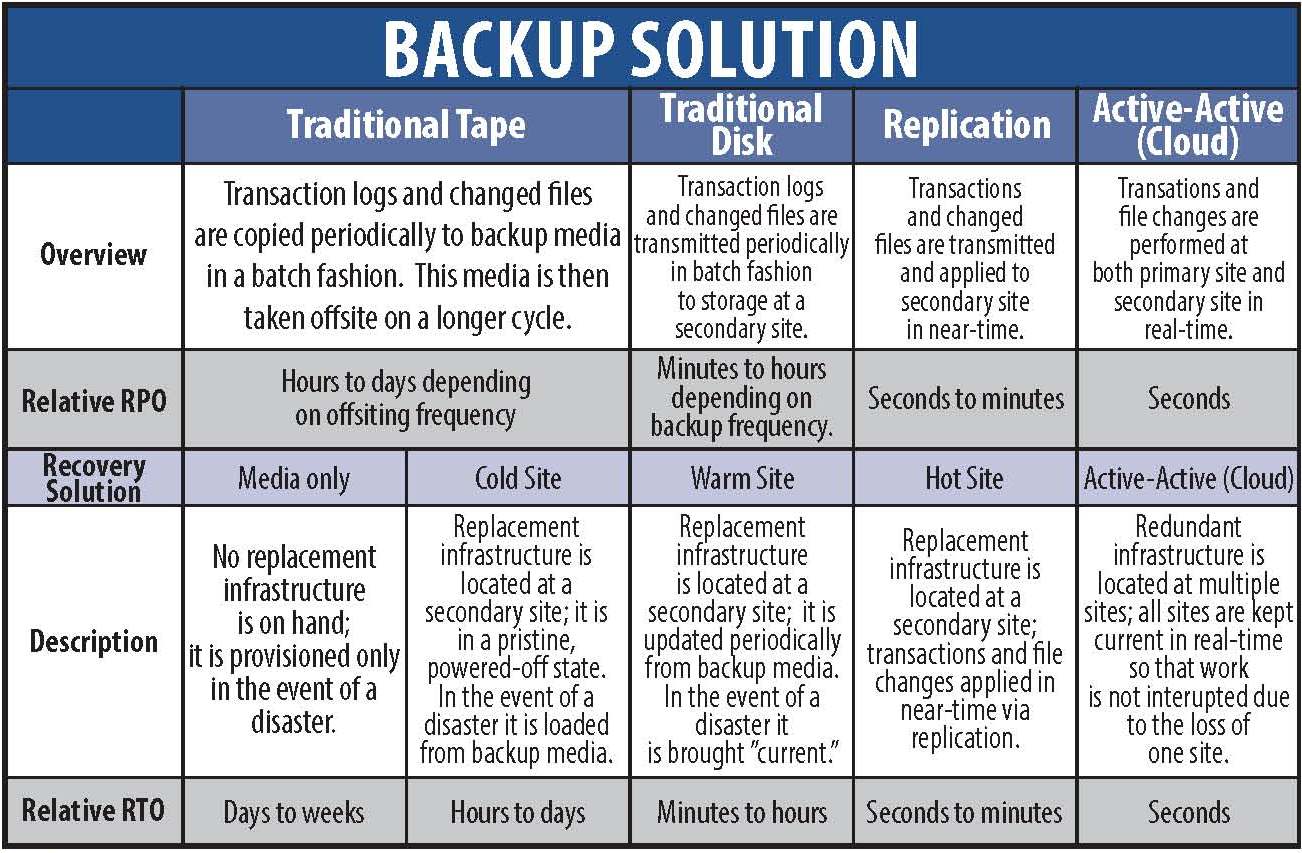 In today’s business environment, your company’s success increasingly relies on technology. Businesses are creating volumes of new business-critical data and employing new applications daily. The drive to increase productivity by having ready access to information anytime, from any place on any device has created ‘technology complexity’. This increased complexity combined with the 24×7 business cycle and the evolving demands of the business makes protecting your data more important than ever.
In today’s business environment, your company’s success increasingly relies on technology. Businesses are creating volumes of new business-critical data and employing new applications daily. The drive to increase productivity by having ready access to information anytime, from any place on any device has created ‘technology complexity’. This increased complexity combined with the 24×7 business cycle and the evolving demands of the business makes protecting your data more important than ever.
Whether protecting a data center, local or remote offices, or even a single device, your technology infrastructure needs a backup solution that meets the demands of the business within the constraints of limited IT budgets. Your business deserves a backup and recovery solution which will minimize the impact of a system failure or outage that may include business continuity.
Strict budgets are driving IT professionals to seek out alternatives such as virtualization and cloud computing to implement solutions for data backup, archiving, and disaster recovery to achieve their goals. The search is on for a single if not a simple data backup solution that is capable of handling complex and ever-increasing volumes of data and system applications.
Protecting your Data:
There are three questions you must ask to get started in creating a backup or disaster recovery plan.
1) How long can I afford to be down? (Recovery Time Objective) 2) How much data can I afford to lose? (Recovery Point Objective) 3) How much can I afford to spend upfront and on an ongoing basis for a backup solution?
The answers to each of these questions not only affect each other but also provide the overall guideline for planning your approach to secure your information.
Let’s walk through the definitions of RTO and RPO.
RECOVERY TIME OBJECTIVE
According to Wikipedia, “the recovery time objective (RTO) is the duration of time and a service level within which a business process must be restored after a disaster (or disruption) in order to avoid unacceptable consequences associated with a break in business continuity.
RTO can include the time required to assess a disruption, to determine and consider various repair options, the recovery itself if a resource is deemed to be lost or damaged beyond repair, post-recovery testing, and the restoration of service and communication to stakeholders.
The RTO attaches to the business process and not the resources required to support the process. The RTO for each company and function is different. Some companies could have a two-week RTO while others could be counted in seconds. Depending on the critical nature of your applications, you may have different levels of RTO within your data structure
The order of magnitude of the RTO (weeks vs. hours vs. seconds) will provide guidance as to candidate backup and recovery solutions, as technical limitations of certain solutions will preclude their use for tighter RTOs. The ability to recover your IT infrastructure and business applications should be considered in addition to the data associated with these applications. You may discover that changes within your IT infrastructure and applications will be required to meet your desired RTO.
RECOVERY POINT OBJECTIVE
Wikipedia defines RPO as “…the maximum tolerable period in which data might be lost from an IT service due to a major incident. The RPO gives disaster recovery planners another limit to work to when designing an effective backup and recovery solution. For instance, if the RPO is set to 4 hours, then in practice, off-site backups must be completed every 4 hours i.e. a daily offsite backup on tape will not suffice.
RPO is completely independent of RTO. RPO is simply, the amount of data you are willing to lose in the event of an outage or disaster, or the amount of work or processing that would need to be repeated (or lost) following successful recovery.
DATA BACKUP – DISASTER RECOVERY
Based on your answers to questions 1 and 2, your business may only require a daily backup. On the other end of the spectrum, you may need a full-blown cloud system, so that in the event of a service interruption, users never notice.
At a glance, the following table provides a simplistic view for protecting your data and the associated RTO and RPO levels along with what you can expect regarding their reliability.
Fig 1: click on the image to expand it
HOW MAINSTREAM TECHNOLOGIES CAN HELP
Mainstream Technologies will help you ask the right questions; find the appropriate answers and help you design a disaster recovery plan which meets your expectations, government and/or industry regulations, and your budget.
Preparing for a service outage is much more than simply having a data backup. The challenge is to determine how long it will take to fully restore service when an outage of any type is experienced.
GetITback® is the data backup component of an overall disaster recovery solution. GetITback® is a traditional disk backup solution that provides recovery better than a Cold Site (see Fig 1. above) but not as well as a Warm Site. It is cost-competitive with tape and eliminates the need to purchase or manage replacement hardware.
GetITback® provides:
- · Full backups daily (or more often if desired)
- · Custom backup plan to meet your RPO
- · Fail-safe backup
- · Faster recovery
- · Multiple versions of your data stored
- · Option to use the Mainstream’s data center as a failover in the event of a disaster
- · Option to restore data to the off-site location of your choice
- · Verified backup daily
- · Option to test your backed up data quarterly
Now that your data is secure, the worst-case scenario is losing all your computers and networks. In this scenario, you’re effectively starting over, and expediting restoration time is critical to your business’s survival. Acquiring and installing new computers and software will be required before your data backup comes into play. Without proper planning, it could take weeks to restore operations.
Mainstream Technologies can guide you through the contingencies and options of tried and true ways to make sure your business risk is minimized in the event of an outage.
ABOUT MAINSTREAM TECHNOLOGIES
Mainstream Technologies a Little Rock, Arkansas technology provider offers, managed technology services, technology consulting, custom software development, data center services, and cybersecurity services. Established in 1996, Mainstream has earned a reputation for delivering quality, reliable, and professional technology services for public and private-sector customers across the United States.
Jeff Pracht
IT Business Development Manager
(479) 715-8629 Office
(501) 529-0008 Mobile






